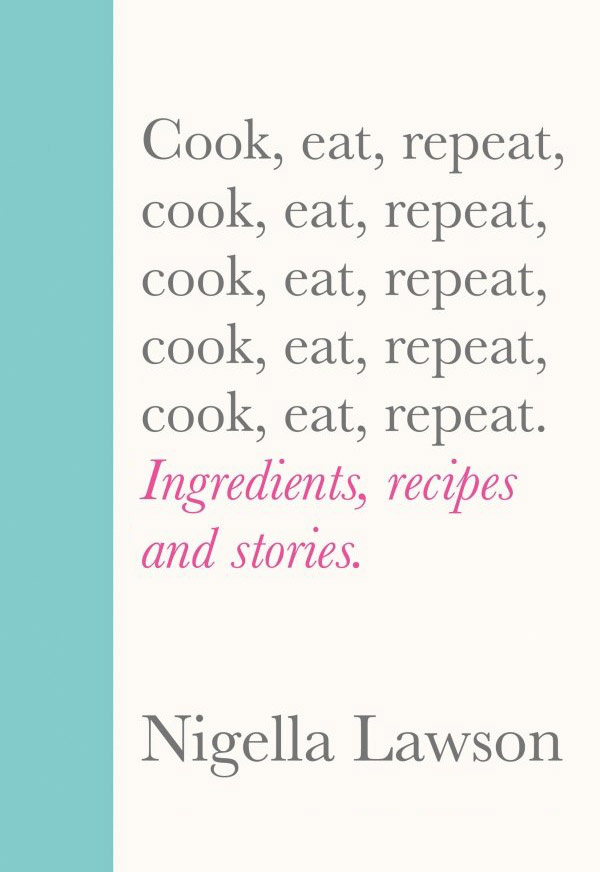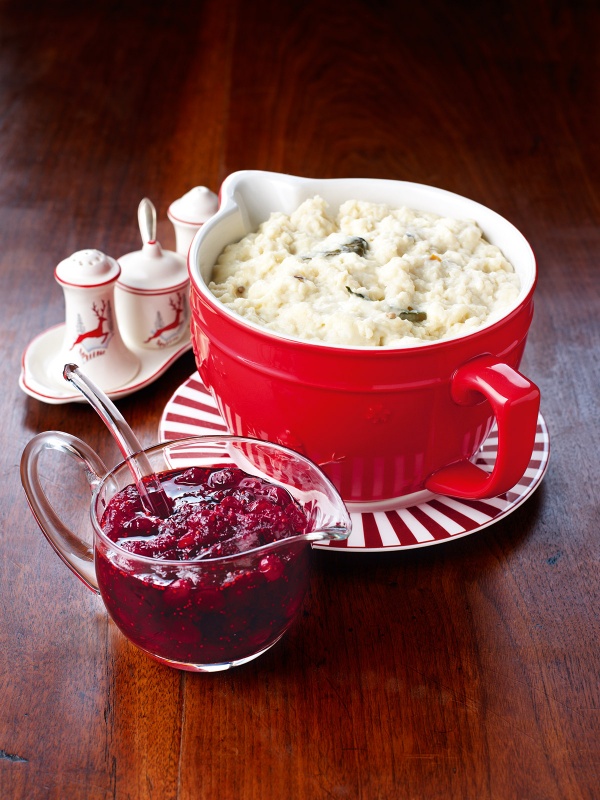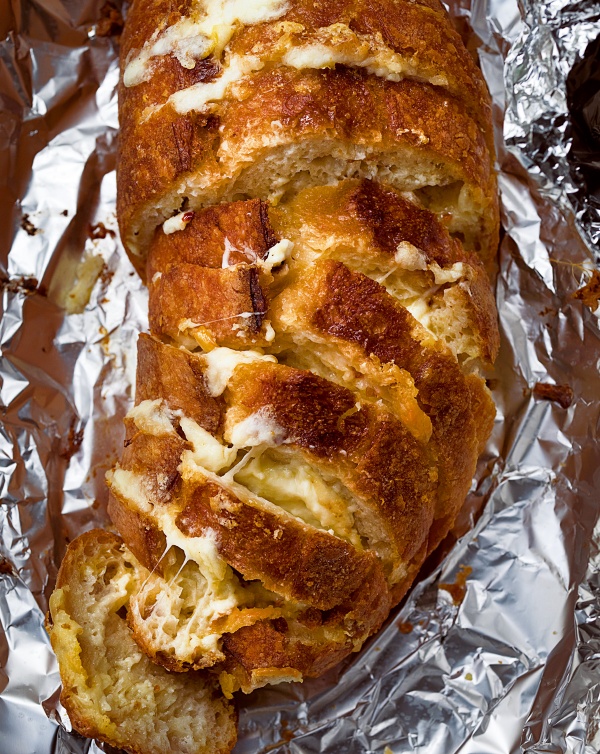Old-Fashioned Sandwich Loaf
by Nigella. Featured in COOK EAT REPEATIntroduction
While the everyday bread on my table is generally Jim Lahey's round, crackle-crusted Basic No-Knead Bread or some variant thereof, there are times when I just want a slice of old-school, tender-crumbed bread, and this Old-Fashioned Sandwich Loaf exactly fits the bill. As its name suggests, it is perfect for sandwiches — be they bacon, sausage, egg, fish finger — and the bread I always use for my Fried Chicken Sandwich if a good burger bun is not to be found. It also just happens to make the most wonderful toast.
It is my reworking of Dan Lepard’s Sour Cream Sandwich Bread, only I use spoilt milk instead of sour cream, adding butter to make up the fat, but quantities are given for either version below. And should you need it to be vegan, simply replace the spoilt milk with plant-based yogurt and the butter with vegetable fat, and reduce the salt and sugar to 1 teaspoon each. Whichever way you make it, it is a triumph, and bafflingly easy: the most stringent demand on you, in the course of making it, is that you knead it 3 times for 10 seconds at 10-minute intervals. What are you waiting for?
While the everyday bread on my table is generally Jim Lahey's round, crackle-crusted Basic No-Knead Bread or some variant thereof, there are times when I just want a slice of old-school, tender-crumbed bread, and this Old-Fashioned Sandwich Loaf exactly fits the bill. As its name suggests, it is perfect for sandwiches — be they bacon, sausage, egg, fish finger — and the bread I always use for my Fried Chicken Sandwich if a good burger bun is not to be found. It also just happens to make the most wonderful toast.
It is my reworking of Dan Lepard’s Sour Cream Sandwich Bread, only I use spoilt milk instead of sour cream, adding butter to make up the fat, but quantities are given for either version below. And should you need it to be vegan, simply replace the spoilt milk with plant-based yogurt and the butter with vegetable fat, and reduce the salt and sugar to 1 teaspoon each. Whichever way you make it, it is a triumph, and bafflingly easy: the most stringent demand on you, in the course of making it, is that you knead it 3 times for 10 seconds at 10-minute intervals. What are you waiting for?

Share or save this
Ingredients
Makes: 1 beautiful loaf
- 500 grams strong white bread flour plus more for dusting
- 2½ teaspoons (7g) or 1 x 7g/¼oz sachet fast-action dried yeast
- 2 teaspoons (8g) caster sugar
- 2 teaspoons (12g) fine sea salt
- 125 millilitres spoilt milk (or sour cream) straight from the fridge
- 3 x 15ml tablespoons (45g) soft unsalted butter (omit if using sour cream, plus more for greasing tin)
- vegetable oil for kneading
- 4 cups (500g) strong white bread flour plus more for dusting
- 2½ teaspoons (7g) or 1 x 7g/¼oz sachet fast-action dried yeast
- 2 teaspoons (8g) granulated sugar
- 2 teaspoons (12g) fine sea salt
- ½ cup spoilt milk (or sour cream) straight from the fridge
- 3 tablespoons (45g) soft unsalted butter (omit if using sour cream, plus more for greasing tin)
- vegetable oil for kneading
Method
You will need a 2lb/900g loaf tin — dimensions vary, but as a guide, mine has internal measurements of 24 x 12 x 8cm / 9.5 x 5 x 3in.
- Mix the flour, yeast, sugar and salt in a large bowl.
- Pour the spoilt milk (or sour cream) into a measuring jug, add 150ml/⅔ cup of cold water (which will take you to the 275ml / 1½ cups mark) then add 100ml/7 tablespoons boiling water (and I’m presuming you don’t need me to say that it should now read 375ml). Stir the soft butter into the jug; it won’t melt entirely, but that’s fine.
- Pour the jug of wet ingredients into the bowl of dry ingredients, stirring as you go, either with a wooden spoon, a Danish dough whisk or — and these are my tools of choice here — hands. Stir until all the flour — apart from a little that’s clinging to the sides of the bowl — is absorbed into the dough; if this takes a minute I’d be surprised. Form into a rough ball, cover the bowl with food wrap or a shower cap, and leave for 10 minutes.
- Pour a little oil onto the kitchen counter and spread it with your hand to give a light sheen to an area big enough to knead on. Take the dough out of its bowl and duly knead it for 10 seconds. How you knead is very personal: we all have our different styles; I push the dough away with the heel of my hand and bring it back with my fingers. Form the dough back into a ball, return it to its bowl, cover it again, and leave for 10 minutes. Repeat this process twice, and after the third 10-second knead, form the dough into a ball again, put it back in the bowl, cover, and leave for an hour.
- Line the bottom of a 2lb/900g loaf tin and very lightly grease the sides; I use an old butter wrapper for this. Take the plumptiously risen dough out of its bowl, and pat it out on your oiled surface so that you have a soft, puffy mattress about 2cm thick, with one edge about 4cm shorter than the length of your tin. Starting with this edge, and using both hands, tightly roll the dough into a scroll — or swiss roll, if that helps you visualise it better — and tenderly place it seam side down in your prepared tin; you may have to press the short sides gently to fit it in, as the scroll can get longer as you roll. Leave to rise for 1–1½ hours, until it’s peeking out just above the top of the tin. Turn the oven on when it looks like it’s nearly there.
- So, heat the oven to 200℃/180℃ Fan/400°F. Dust the top of the dough with flour and bake for 45 minutes, by which time the bread will be risen, with a rounded and deep biscuity-gold top. Unless your oven is misfiring, it will definitely be done. Armed with oven gloves, quickly take the bread out of the tin, and place it on a wire rack to cool before slicing into it. To keep the loaf fresh for as long as possible, store in a bread bin. The next best method is to wrap it in a tea towel.
You will need a 2lb/900g loaf tin — dimensions vary, but as a guide, mine has internal measurements of 24 x 12 x 8cm / 9.5 x 5 x 3in.
- Mix the flour, yeast, sugar and salt in a large bowl.
- Pour the spoilt milk (or sour cream) into a measuring jug, add 150ml/⅔ cup of cold water (which will take you to the 275ml / 1½ cups mark) then add 100ml/7 tablespoons boiling water (and I’m presuming you don’t need me to say that it should now read 375ml). Stir the soft butter into the jug; it won’t melt entirely, but that’s fine.
- Pour the jug of wet ingredients into the bowl of dry ingredients, stirring as you go, either with a wooden spoon, a Danish dough whisk or — and these are my tools of choice here — hands. Stir until all the flour — apart from a little that’s clinging to the sides of the bowl — is absorbed into the dough; if this takes a minute I’d be surprised. Form into a rough ball, cover the bowl with food wrap or a shower cap, and leave for 10 minutes.
- Pour a little oil onto the kitchen counter and spread it with your hand to give a light sheen to an area big enough to knead on. Take the dough out of its bowl and duly knead it for 10 seconds. How you knead is very personal: we all have our different styles; I push the dough away with the heel of my hand and bring it back with my fingers. Form the dough back into a ball, return it to its bowl, cover it again, and leave for 10 minutes. Repeat this process twice, and after the third 10-second knead, form the dough into a ball again, put it back in the bowl, cover, and leave for an hour.
- Line the bottom of a 2lb/900g loaf tin and very lightly grease the sides; I use an old butter wrapper for this. Take the plumptiously risen dough out of its bowl, and pat it out on your oiled surface so that you have a soft, puffy mattress about 2cm thick, with one edge about 4cm shorter than the length of your tin. Starting with this edge, and using both hands, tightly roll the dough into a scroll — or swiss roll, if that helps you visualise it better — and tenderly place it seam side down in your prepared tin; you may have to press the short sides gently to fit it in, as the scroll can get longer as you roll. Leave to rise for 1–1½ hours, until it’s peeking out just above the top of the tin. Turn the oven on when it looks like it’s nearly there.
- So, heat the oven to 200℃/180℃ Fan/400°F. Dust the top of the dough with flour and bake for 45 minutes, by which time the bread will be risen, with a rounded and deep biscuity-gold top. Unless your oven is misfiring, it will definitely be done. Armed with oven gloves, quickly take the bread out of the tin, and place it on a wire rack to cool before slicing into it. To keep the loaf fresh for as long as possible, store in a bread bin. The next best method is to wrap it in a tea towel.
Additional Information
STORE:
Store in airtight container or wrapped in clean tea towel in cool place for 4-5 days.
FREEZE:
Freeze loaf or slices in freezer bags, removing as much air as possible, for up to 3 months. Defrost at room temperature. Layer slices with baking parchment or food wrap if using individually. Slices can be toasted from frozen.
STORE:
Store in airtight container or wrapped in clean tea towel in cool place for 4-5 days.
FREEZE:
Freeze loaf or slices in freezer bags, removing as much air as possible, for up to 3 months. Defrost at room temperature. Layer slices with baking parchment or food wrap if using individually. Slices can be toasted from frozen.






Tell us what you think
Thank you {% member.data['first-name'] %}.
Explore more recipesYour comment has been submitted.
What 49 Others have said
-
Posted by Iamstarving on 5th March 2025
-
Posted by Shannon70 on 22nd December 2024
-
Posted by Cookery4778 on 21st September 2024
-
Posted by SammyNandez on 1st June 2024
-
Posted by Farah1 on 10th December 2023
-
Posted by Cookery4778 on 29th October 2023
-
Posted by CJCleary on 9th May 2023
-
Posted by banwellks on 8th May 2023
-
Posted by Cappellj on 16th January 2023
-
Posted by Mikey2022 on 9th January 2023
-
Posted by LynnK01 on 18th September 2022
-
Posted by Trudy sampson on 26th August 2022
Show more commentsThe first time I made this bread I used sour cream. I only had a one pound loaf pan and thought "lets see what happens." It looked like Noah's Ark but tasted great. So, when I made it today I only had buttermilk and I divided the bread into two loaf pans. It came out perfectly. I'm so excited. Please make more tv shows. Thank you.
Found this recipe after watching the episode. It’s absolutely delicious! I divide the dough into two loaves, cut the baking time in half and use the proof function on my oven: 95 degrees. Adding a light egg wash and scoring before baking creates a beautiful crust and finish to the loaves. Thank you, Nigella for this fantastic bread recipe!
I have been making this loaf for a number of years and previously have sung its praises on this blog.
In the past, I have always used sour cream. However, I have just made it for the first time with natural yoghurt because my local convenience store did not have any sour cream. To my surprise, the result is even better. The bread has a much better texture and a better crust. I was surprised this worked so well because I used a "set" natural yoghurt. I was expecting a disaster and was very pleased with outcome.
I've made this so many times now and it's my go to bread now because of how beautiful and delicious it is! This time I only had Greek yoghurt but it worked beautifully! I also put sesame seeds on top and wow!
I made this bread in a breadmaker and it turns out really well. The children love it and I keep coming back to this recipe. The loaf keeps well and not dry if stored well. Great recipe, thanks Nigella xx
Delicious - a loaf of outstanding texture which is so simple to make. I highly recommend this recipe.
My bread making efforts have gone in "fits and starts" over a period of about twenty years. I bake my own bread for a while and enjoy doing so and, then lapse; making do with shop bought loaves.
I have followed various bread making recipes courtesy of Delia and Nigella; including John Forest's recipe in Nigella's book 'How to Eat.'
I was particularly struck by this recipe and the use of sour cream or soured milk. It reminded me of the traditional recipe for Irish Soda Bread which was always made with flour, soured milk and a pinch of salt; despite cookery writers offering all sorts of fancy recipes for Soda Bread nowadays. Before the days of modern refrigeration in Ireland, there was no shortage of sour milk to use up and it was used to make Soda Bread in every Irish home. Despite my Irish heritage, Soda Bread has never impressed me that much. Whereas this recipe is tops.
I have previously made this bread using sour cream with excellent results. Today I tried it with plain yoghurt instead and it turned out just as good. Fantastic recipe, particularly for morning toast.
Has anyone tried this in a breadmaker?
First time making yeasted bread. Very pleased with result. Directions are detailed and make a difference for best outcome. Love this toasted! Thank you for the recipe. My go to bread!
I made this bread subbing out the milk/ sour cream and 125 g of the flour for 250g of sourdough discard (still lively but approaching need for feed stage). I kept the yeast in and the result was lovely. It was beautiful soft bread with a good but not too crusty crust and there was a nice sourdough tang without the wait. A big hit with my young daughter and will be trying it on elder folk whose teeth find the full sourdough crust too much and prefer a sandwich loaf anyway.
I have made this bread so many times and it always comes out perfect. My 10 year old grandchildren have made it with me and every time it is delicous. I never use any other bread recipe now. I even went and bought another loaf tin so I could make 2 loaves at a time as we devour 1 loaf so quickly. If you have never attempted to make bread before I would highly recommend this recipe as its so easy and perfect every single time.
I’ve baked this loaf many times using sour cream and it works a treat. Yesterday when I baked it I didn’t have any sour cream so I used some spoiled milk like Nigella did in the video and I have to say it worked even better. It’s not as dry some how, and I tried her method of double butter and salt on toast. My goodness it’s divine. I have to stop myself at 2 slices.